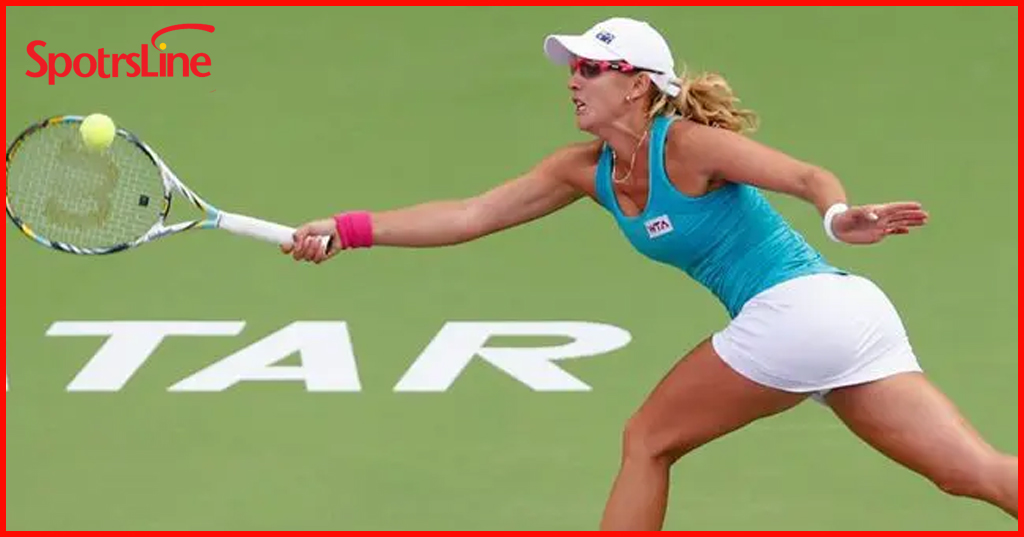
Tennis tips guide for everyone
Many fans left messages on the official account, asking me to talk about tennis tips and what the 3.0 or 4.0 level of tennis is, or whether they have reached this level. So today’s topic starts from here.
■Question : Have you reached 3.0?
The usual and customary answer is to copy and paste the NTRP evaluation criteria and get away with it. I don’t think there is anything wrong with this system, but it is true that for an evaluation standard, those with high levels will not adopt it, and those with low levels will not practice it, and they will over- or under-evaluate themselves.
With the development of tennis technology, some standards of this system are not accurate and need to be redefined or re-recognized. Or we should have some simple understanding. Since this standard is to facilitate everyone to make appointments for playing, the level standards should be divided according to the experience and adaptability of playing. The following is the view:
●1.0 In one word, stable; you can get as many balls back as you can, at least 5 in a row; otherwise, making an appointment to play is like asking your friends to join you in the execution ground;
●1.5 Two words: very stable; those who can complete the 100-ball challenge are very stable and can directly enter the next level;
●2.0 Steady and accurate; capable of hitting whatever you point at, and can do so continuously and accurately; from the experience of playing against each other, it is possible to accurately return the opponent’s ball to the target for more than 10 beats, or even higher; less than 10 beats is obviously a feeling of not being able to scratch the itch;
●2.5 The ability to hit the backhand ball back to the center for multiple shots;

More
●3.0 Steady, accurate, and complete: Yes, that’s it, but don’t talk about being ruthless. If you have a 3.0 practice partner, do you have to practice short-court forehand and backhand, mutual volleys, mutual high pressure and high lobs, and serving?
●3.5 What do you think of this level? I have never heard of anyone calling themselves 3.5. This level is the transition from a practice player to a competition player. I think it should be about rotation and line. Being able to deal with or be able to play rotation, line and depth changes;
●4.0 Stable, accurate, complete and ruthless;
You have to play at 75% or more speed; your first serve flat hit or spin into the boundary rate is more than 50%, and your second serve topspin into the boundary rate is more than 80%; the height, depth, angle, and spin can be changed and can adapt to changes;
●4.5 More wins than losses in the same level competition; this is easy to understand. It has an additional competition ability.
●5.0 and above, the results of open competitions will have a say. Club competitions, group competitions, industry competitions, business competitions, and school competitions do not count.
■Question : How tight is your grip?
There are two vivid ways to express the tightness of your grip. One is like holding a bird in your hand, not letting it fly away. But not holding it too tightly; the other is to look at your finger joints. If your finger joints turn white, then you are holding it too tightly.
The tightness of your grip determines how high your hitting level can reach, as well as whether the way you use force is correct or not.
In each stage of the swing, only the moment of hitting the ball is moderately tighten. At other times it is completely relaxed.
Is this accurate? Not really. To clarify:
If you are a beginner, or a coach for beginners. Don’t worry about whether to relax or tighten; the student’s natural state is what it is.
You are an advanced player, you can relax and swing freely, there is no need to tighten up;
As long as the game is difficult, everyone will tighten up when facing high difficulty. Tighten up and play without losing the ball;
■Question : The feeling of movement posture
This is something that beginners and low-level players have always neglected. In their view, there is nothing wrong with standing upright or crawling down to hit the ball.
A good sports posture is very important for the beauty of movement, comfort level, force and pressure, agility and balance. This is the foundation of your tennis technique and must be checked.
The knees and waist joints of the body are moderately bent, and the body forms a stretched and deformed N shape. This is the standard posture for waiting to hit the ball. Take a look at the picture above.

I see some amateur players squatting to prepare, which doesn’t make sense. Standing like a telephone pole is also not advisable.
■ Question : Should we prepare or wait?
When I teach some beginners to play, I find a problem. The preparation stage we usually talk about is the waiting stage in the eyes of many people. They will consciously or unconsciously relax completely, and psychologically it seems that they have finished hitting the ball and are not prepared for the next ball at all. I call it waiting, which is a super amateur mentality, and wait and see if the opponent can reach the ball first.
The correct preparation state should be that you should try to keep your racket arm and elbow away from your body when holding the racket, and keep the racket upward and parallel to your upper body, so that you are ready to turn and hit the ball at any time.
■Question : Movement posture and action framework
It is very interesting that all kinds of sports have a universal movement posture, in addition to ball games, running, and even sports such as martial arts and weightlifting, which is the basis of human movement.
The sports posture is more like a deformed N or Z shape. The upper body also has the same slight curvature when the knees are slightly bent. In the sports posture, bad sports posture is mostly manifested in hunched back, excessive knee flexion and forward leaning, or the center of gravity sitting back, etc., all of which affect your athletic ability.
Some students cannot make hand movements in sports posture. If it is too difficult to correct, it is better to let them play while standing upright.
The action framework or structure, which is often mentioned by senior coaches, does sound confusing at first. But the fact is that it is the correct action framework that can get the accurate hitting point, smooth power output, and accurate and flexible hitting line.
Junior coaches sometimes overemphasize the structure of the movement, but ignore the physiological characteristics and athletic ability of the students, and rigidly and dogmatically emphasize the standardization of the movement structure. For any person, the movement structure serves people, not people for the movement framework.

■Question : Did it go around in a circle?
It is a widely accepted fact that the racket circles when swinging the racket to hit the ball. However, with the continuous evolution of modern technology, the traditional circle swing has gradually faded out of people’s vision, and has been transformed into a swing mode of flat push, inertia drop, and diagonal upward straight swing during rotation.
This is done to adapt to the increasingly faster ball speed and rotation. The slow-paced swing has natural limitations in timing and power output. In the backhand, the swing is directly transferred to the waist and then swung forward in a > shape.
■Straight or reverse swing
This question is part of the previous one. The reverse curve swing, or the pattern where the racket lands in the U-groove, is only use when dealing with low balls. For normal shots, the swing goes in a straight line that goes up and down. Then enters a windshield wiper swing at impact.
It is important to note that in professional competitions. The previous low-center-of-gravity hitting mode is increasingly abandoned. The basic method is to slightly bend the knees and swing the racket in a reverse curve to play the ball more efficiently. In terms of dynamic footwork, double-point support twisting and low body rotation have replaced the traditional deep knee bend neutral stance to hit the ball low.
■Around the shoulders or around the chest
When following through, many people give up the shoulder-around follow-through. I think it is inaccurate to say that the shoulder-around follow-through is outdated. The shoulder-around follow-through still plays an irreplaceable role in your accurate body rotation, accurate hitting point, and accurate swing trajectory.
Many people who are new to tennis or who are self-taught have their bodies spinning like a gyroscope while playing, without stopping the acceleration process. They just keep practicing by swinging around their bodies, not knowing that the output of the power chain requires a pause in shoulder rotation at the hitting point.
■Shoot the ball from the back or from above
A considerable number of players have a wrong understanding of where to hit the ball when hitting a spin ball. They think that topspin is to hit the upper back part of the ball and backspin is to hit the lower back part of the ball. Which is only partially correct.
If you often have topspin balls that are shallow and backspin balls that are floating. Then you are hitting the ball at the wrong point. The correct understanding is that for topspin balls. You swing the racket upward and hit the back of the ball; for backspin balls. You swing the racket downward and hit the back of the ball.
Of course, your various drop shots are meant to hit the ball from below, or it’s called backspin.
The same is true for serving. Amateur players will brush the top of the ball forward to create topspin. Which does not bounce high or land deep. Some players will hit the 2 o’clock position, which is called side topspin. Some players will hit the 3 o’clock position to create side spin. The problem with this is that there is too much rotation but not enough power. It is also difficult to achieve inward rotation of the wrist. Or if the wrist is inward rotated, the ball will land too far.
The common practice among professional players now is to hit the ball directly behind. The difference lies in the direction of the swing and the natural inward rotation of the wrist.


One thought on “Tennis tips guide for everyone”